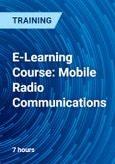This course introduces the radio communications techniques employed in the radio access network (RAN) between mobile equipment and base station.
It is suggested this course, along with the companion course MBA: “Introduction to mobile systems”, is studied as preparation for the other PTT courses covering specific generations of mobile system such as GSM, UMTS and LTE.
The course begins by describing how radio waves are affected by the environment and defining terms such as loss, delay and interference. The meaning, cause and effects of the various types of fading are also explained. The basic principles of data communications are reviewed and the impact of the increase in mobile access to the Internet on the radio access network discussed. The course also discuss the allocation of radio frequencies to mobile communications and methods of providing secure communications over the RAN.
Course prerequisites:
Before studying this course you should have a clear understanding of the structure of mobile networks, including the components of the core network. You should also be familiar with the terms authentication and authorisation. The PTT course MBA: "Introduction to mobile systems" covers these topics.
Course objectives:
By the end of this course you will be able to:
- define the air interface, and explain how a radio wave is affected by its environment.
- explain the terms loss, gain, cochannel and adjacent channel interference and delay.
- describe types of fading, their causes and methods used to reduce their effects.
- describe methods of providing access to and from a basestation by many mobiles.
- describe frequency bands in use, frequency allocation methods and considerations affecting how frequency bands are used.
- describe the evolution of mobile systems to meet the demand for faster data services.
- compare the structure and components of networks employed by the various generations of mobile system.
- describe the need for, and methods of implementing, secure communications over the air interface.
Course Content
The course consists of the following seven modules:
1. Course introduction
2: Propagation fundamentals
3: Fading, its causes and countermeasures
4: Mobile data communications
5: Multiple access methods
6: Frequency bands and duplexing methods
7: Security over the air interface
Who Should Attend
Target audience:
This online course is designed for those who are, or intend to be, involved in the planning, installation, provisioning or maintenance of mobile systems.








